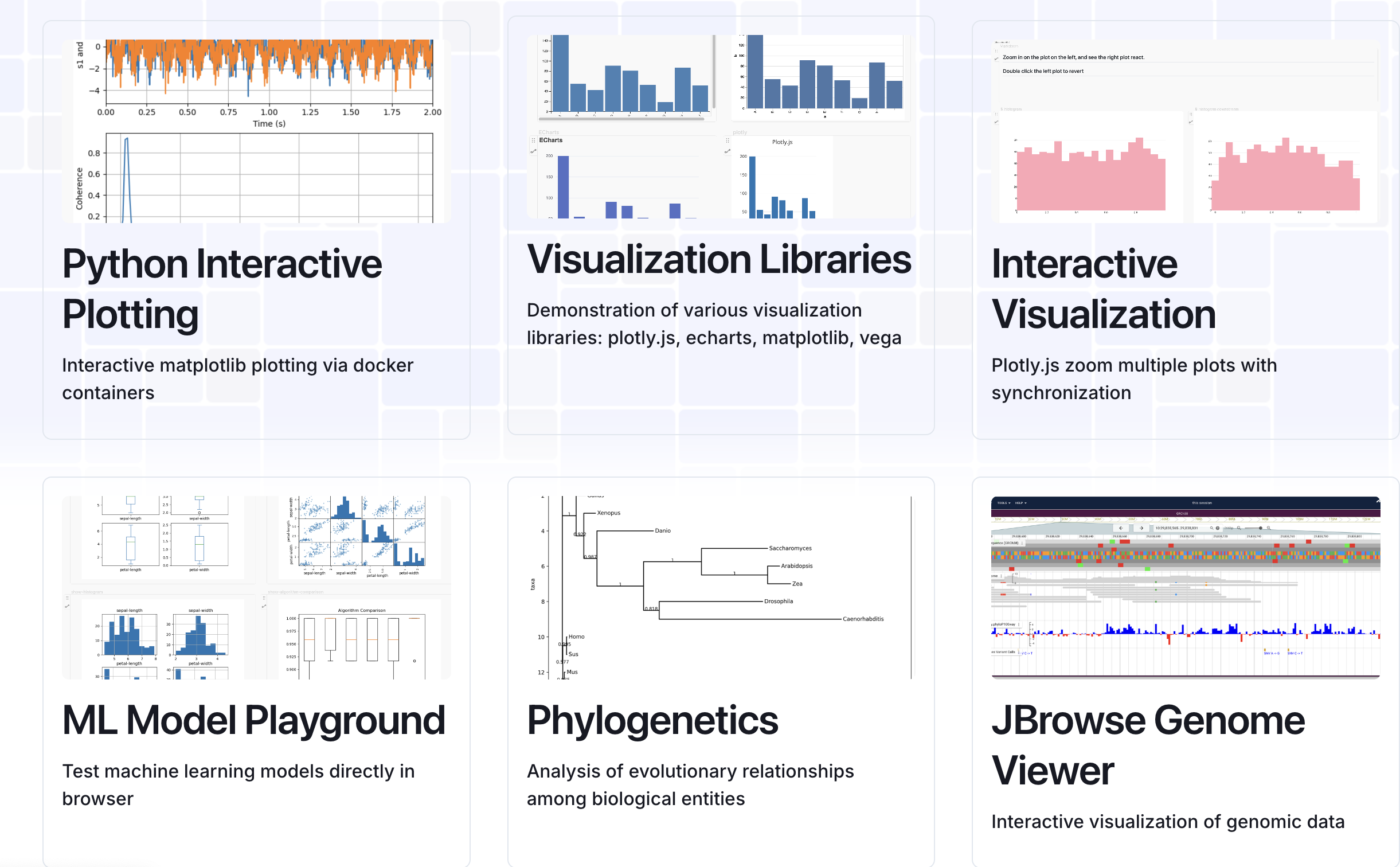Metapages for scientists and researchers
Metapages are open-source, web-native scientific workflows that connect visualization, data, compute, and AI models into a single, shareable experience. Build analyses and simulations that run consistently, then embed them in papers, lab sites, or internal portals, or publish as a standalone interactive page your audience can use immediately.
See examples: https://about.metapage.io/examples

What you can do
- Reproduce and extend results
- Package datasets, analysis code, and visualizations so others can rerun, inspect, and modify with confidence.
- Integrate diverse tooling
- Combine Python, R, Julia, and domain-specific tools in one workflow without forcing a single stack.
- Share interactive figures
- Turn static plots into interactive, citable figures that readers can explore directly in articles, preprints, or lab wikis.
- Collaborate across teams
- Co-edit and use the same workflows in real time across labs and organizations, with predictable, repeatable execution.
How it works
- Metaframes as modules
- Each component (e.g., a visualizer, dataset, or compute step) is a “metaframe,” typically in an iframe, with clearly defined inputs and outputs. They snap together to form your workflow.
- Connect your data and compute
- Point to your data sources and CPUs/GPUs, or bring AI models into the loop, then wire everything with declarative JSON.
- Publish and embed anywhere
- Share a URL or embed snippet to deliver the full, interactive workflow to any device, without asking readers to set up an environment.
In short: compose reproducible, multi-language scientific workflows from interoperable components, then share them as interactive, embeddable artifacts your community can use immediately.